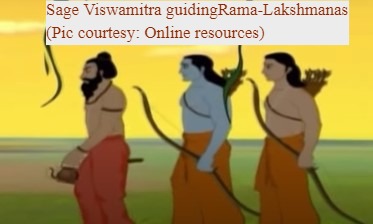Ramayana, a Hand Book of Educational Finesse
- ememkevi
- Aug 1, 2021
- 3 min read
Religious overtones apart, to an analytical eye, Ramayana, the great Indian epic is a compendium of codes of conduct to be imbibed by the society. The two founding principles of Ramayana are ethics and benevolence. Here, these principles are conveyed through situations; or case studies, as the modern day educators put it. Each incident is a byword of a concept and the character is its embodiment.
Balakanda, the first book (out of the total seven) of Ramayana gives many insights to the educational system prevalent in those days, many of which are relevant in the modern times as well. The Balakanda narrates the birth and boyhood of Sri Rama and his siblings. Those days, the learners were encouraged to acquire broad range of competencies (as against the present days’ specialization) through practical experience.
Forsaking the Comfort Zone
Learning gets distracted if it is instructed in one’s comfort zone. The ancient education system or Gurukulams upheld this principle. We come across many incidents wherein royal kids attend the classes with commoners in schools. The Gurukulam days were marked by many challenges and hardships. That was the way to break one’s comfort zone.
Now let’s see an incident of Balakanda. One day Sage Viswamitra arrives at the court of King Dasaratha (Father of Sri Rama and his brothers.)The sage demands that the king sends his sons Rama and Lakshmana with him. The purpose is simple; they have to protect the sage and his community from the enemy demons. Would any father be willing to send his teen-aged boys on such a hard-handed mission? The king declines the sage’s demand. The sage convinces the king that through this mission, the boys will earn practical knowledge of warfare and related extremities which can’t be taught in the environs of a royal household.
The Mentor’s Task
According to merriam-webster.com, mentorship is the influence, guidance, or direction given by a mentor. A mentor stirs up the latent calibre of a person through motivation. It is often likened to dusting a gem to its glow. Mentoring has emotional and aesthetic angle which makes distinct from teaching. Sage Viswamitra was a great mentor. Sri Rama had many qualities which were inherited and also acquired through learning. The sage gave guidance as to when and where these techniques can be best used.
Compassion for the Fellow Beings
A student should be useful for the society and should be compassionate towards the fellow beings (These are the founding principles of National Service Scheme-NSS-in the colleges these days). Ramayana’s Balakanda has many incidents which reaffirms these principles. Ahalya was a noble woman, under unfortunate circumstances; she was put to various sufferings. When Lord Rama came to know about her story, he decided to liberate her from the curse and helped her to reconcile with the family. This story is not just an ancient tale, but it has a deeper message that the learner should be sensitive to the needs and problems of the community and should be actively involved in problem- solving.
Engineering and Technology
In Ramayana, we come across various elements of engineering and technology. Pushpaka Vimana (Avionics), Ramasethu (Civil engineering), Brahmastra (Nuclear bomb) and the like make one to conclude that those days people were aware of these technologies. In Balakanda Sri Rama breaks Shaiva Chapa (Bow gifted by Lord Shiva) to marry Sita. A closer look reveals that it involves the fracture mechanics theory of physics. Rama calculated and applied the right force needed to break the object.
The New- Found Focus, Thanks to Pandemic
The pandemic has created a new found focus on Ramayana which was started off by the re-airing of the popular Ramayana serial during the initial COVID-19 wave. Almost at the same time, the famous shrine of Tirumala-Tirupati Devasthanam in Andhra Pradesh launched the marathon daily chanting of Ramayana which completed its 417th episode as this story is being uploaded (1st August 2021). July –August is the time for the customary Ramayana commemoration month in Kerala. This year it gets added significance, sans pageantry though.
Conclusion
Comprehending the epics is often likened to the parable of elephant and blind men. Everyone defines its utility based on his/her limited and subjective experience. But if the approach is holistic, many wonderful insights emerge out of it.
******

K.V. Murali Mohan
A passionate freelance writer and ardent communicator - Double Post Graduate in communication subjects -Recipient of Kulapati Gold Medal and TKM Rao award in Journalism - Credited with four decades of literary pursuit spanning over 300 plus articles in national and regional publications.





Comments